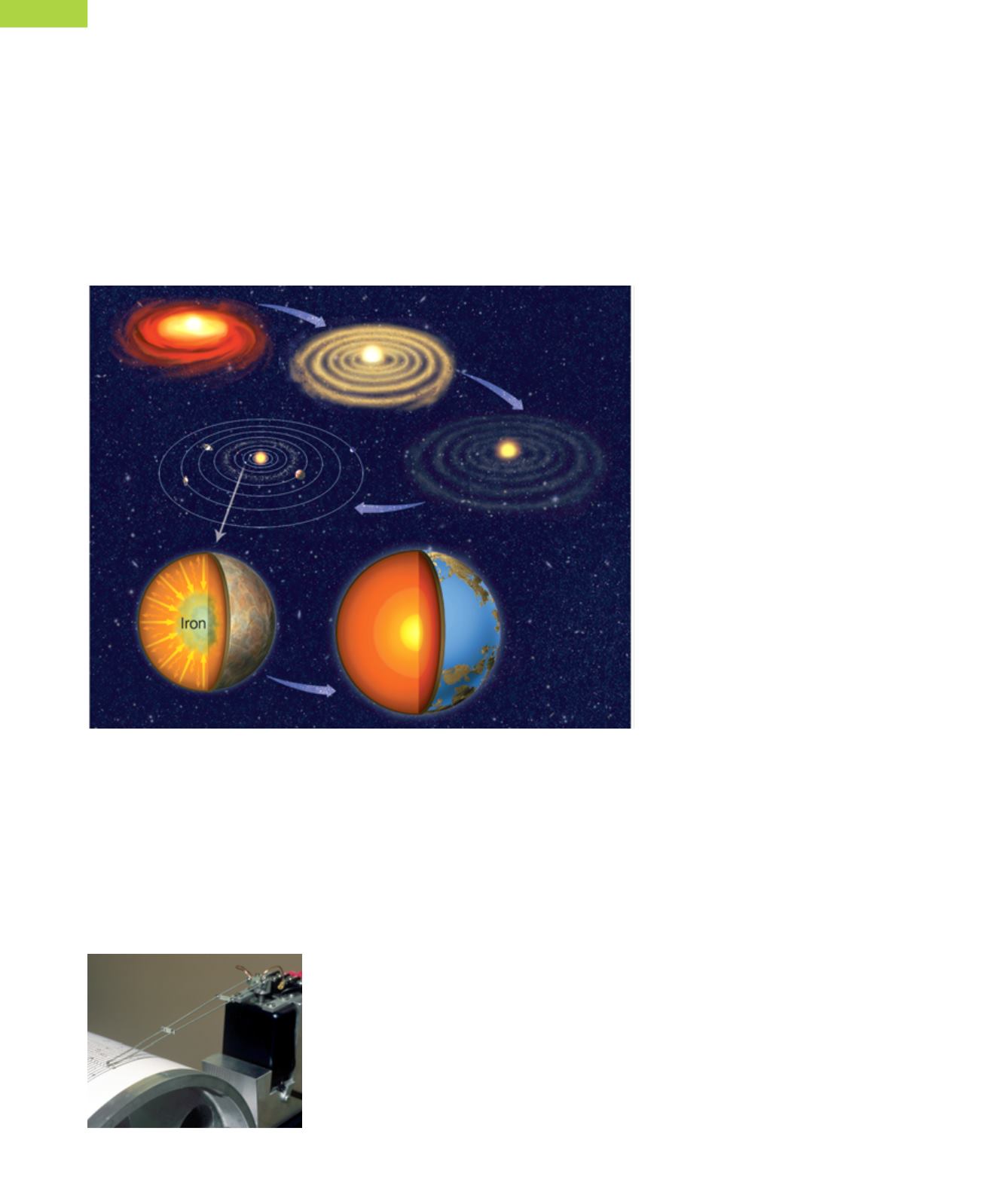
46
1.
THE EARTH: ORIGIN AND COMPOSITION
The Earth is the third closest planet to the Sun. It is a rocky planet and the only planet
that has water in all three states. As a result, it is the only planet with living things.
The Earth can be divided into four layers: the
geosphere
or solid layer; the
atmosphere
or gaseous layer; the
hydrosphere
which contains water in all three
states and the
biosphere
where life exists.
1.1.
The origin of the Earth
According to the latest studies, 4600
million years ago the Sun formed from
chemical reactions in a giant cloud of
dust and gas, called a nebula. In the
cloud of matter that surrounded the
Sun, smaller dust particles collided and
grew in size. This process, which formed
the planets, is called
accretion of
planetesimals
.
For 1 billion years the Earth was
incredibly hot. Due to the immense
heat stored in the Earth’s interior, there
was a lot of volcanic activity during
this period. As the Earth’s temperature
decreased, gravity pushed denser
materials, such as iron, towards the
Earth’s interior. Less dense materials,
such as oxygen, moved towards the
Earth’s surface. This process is called
density differentiation
. As the Earth
cooled, it maintained this structure of
layers.
1.2.
Studying the Earth’s interior
The Earth is 6370 km at the Equator but we only have direct knowledge of the
most superficial layers under the Earth’s surface. Mines or drill holes
1
have allowed
us to reach depths of 8-12 km.
To understand the composition of the Earth’s interior, scientists have to use indirect
methods. The most common method is the study of earthquakes called the
seismic
method
. This method analyses the energy generated by earthquakes.
When you throw a pebble into water, the water moves across the surface in
all directions in waves. Similarly, when an earthquake occurs, the movement
generates waves of energy that travel to the interior of the Earth, called
seismic
waves
. These waves can be detected by an apparatus called a
seismograph
.
This shows us that the speed of the waves vary as they pass from one layer to
another.
The study of the data obtained from seismographs has allowed scientists to deduce
the composition of the Earth’s interior. This information has been used to create a
model of the Earth’s structure. It is divided into three layers: the crust, mantle and
core.
1
drill hole
:
a perforation in the
ground in order to study the rocks
under the Earth’s surface
Seismograph
Formation of the Solar System


